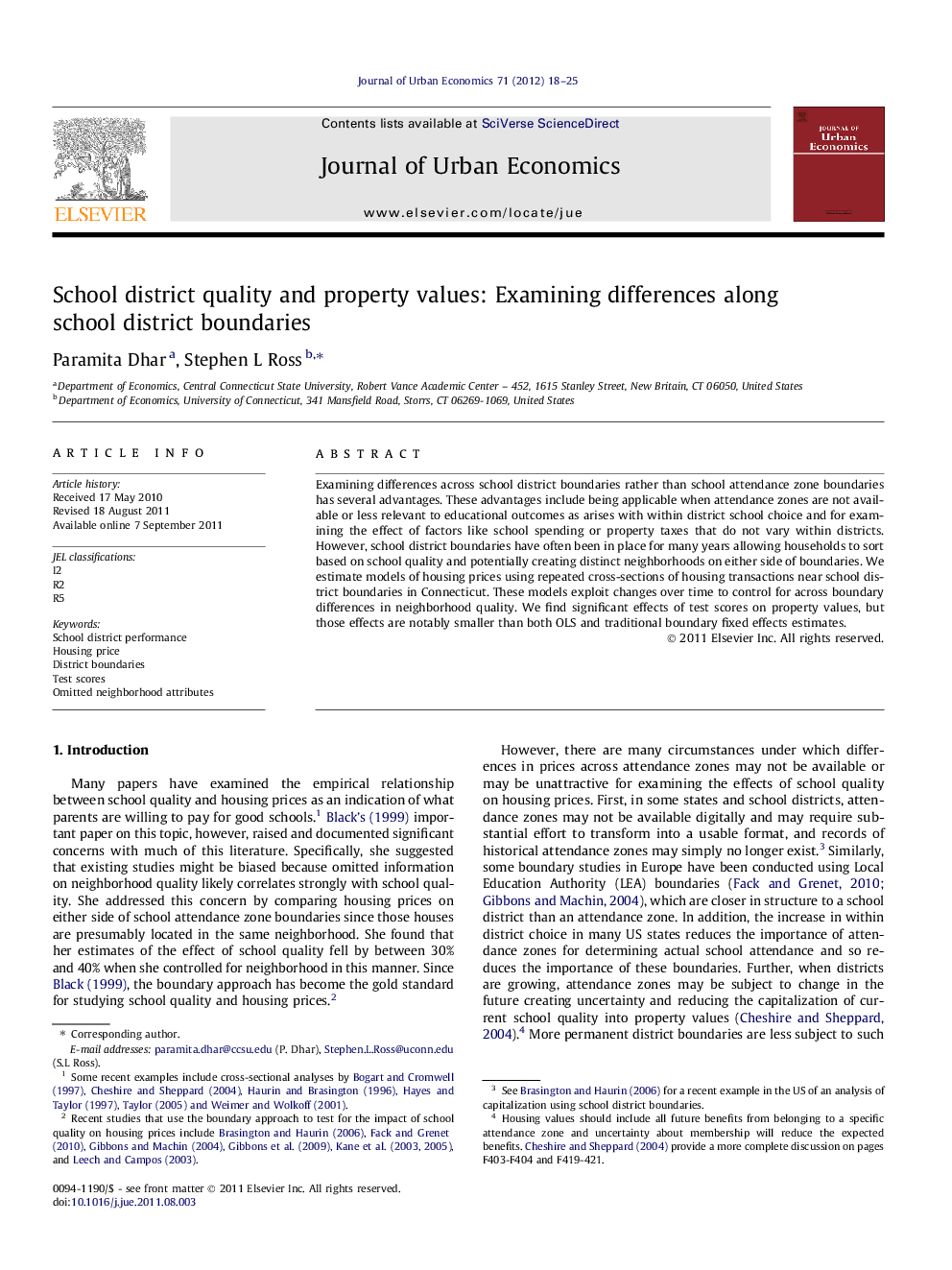| Article ID | Journal | Published Year | Pages | File Type |
|---|---|---|---|---|
| 971824 | Journal of Urban Economics | 2012 | 8 Pages |
Examining differences across school district boundaries rather than school attendance zone boundaries has several advantages. These advantages include being applicable when attendance zones are not available or less relevant to educational outcomes as arises with within district school choice and for examining the effect of factors like school spending or property taxes that do not vary within districts. However, school district boundaries have often been in place for many years allowing households to sort based on school quality and potentially creating distinct neighborhoods on either side of boundaries. We estimate models of housing prices using repeated cross-sections of housing transactions near school district boundaries in Connecticut. These models exploit changes over time to control for across boundary differences in neighborhood quality. We find significant effects of test scores on property values, but those effects are notably smaller than both OLS and traditional boundary fixed effects estimates.
